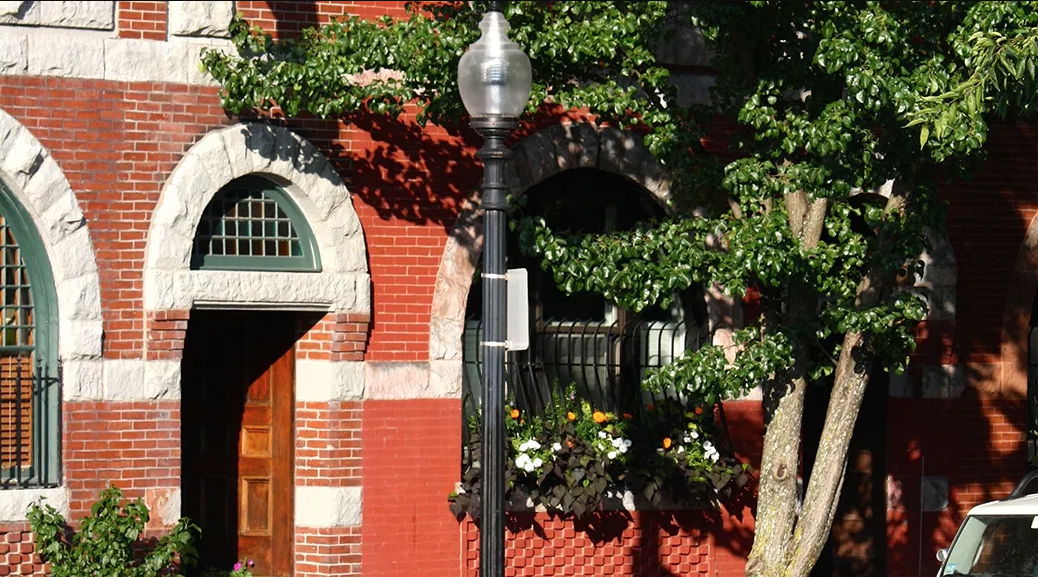.
Healthy Trees, Healthy Cities, Healthy Lives
By Alix Morris
City trees offer a variety of benefits, including reducing air pollution and improving our health, studies say. For the last few years, Earthwatch citizen scientists have collected data to estimate the health and benefits of urban forests in Boston and Los Angeles. In this Q&A with two Earthwatch researchers, find out about the value of urban forests, and the importance of citizen science support.
“Urban forests”—the collection of trees planted between and among city structures, decorating concrete sidewalks and backyard spaces, and scattered throughout city parks – offer more than a respite from city life. They improve air quality, mitigate the effects of climate change, produce oxygen, and offer valuable aesthetic appeal.
.
And, as it turns out, urban forests are good for our health
.

.
Recently, a team of researchers studied more than 500,000 trees in Toronto to measure the effects of urban forests on the health of tens of thousands of Toronto residents. The study found that people who live in neighborhoods with more trees report significantly fewer health conditions, such as heart disease, diabetes, and stroke, and have a higher perceived health. The research adds to a growing body of data indicating that urban forests are good for our psychological health and our physical health, in addition to their positive environmental impact.
.

.
Earthwatch has long recognized the incredible importance of urban forests in resilient cities and currently offers one-day expeditions in Boston and Los Angeles for volunteers interested in helping researchers to identify and measure trees. Urban trees face a number of threats, including lack of access to water, pollution, diseases, shading by buildings, and removal by city officials. By studying these threats and measuring the growth and abundance of trees, Earthwatch researchers and volunteers can provide local tree managers with the tools they need to maintain healthy urban forests.
.

An Earthwatch volunteer measures the circumference of a tree in Boston to assess its health.
.
I had a chance to speak to two Earthwatch researchers—Dr. Darrel Jenerette of the University of California, Riverside and Dr. Vanessa Boukili of Earthwatch—about the importance of understanding our urban forests, and the value of citizen scientists. Here’s what they had to say:
What is the message you’d like to share with people who want to get involved with this research?
Darrel: I think it’s important to know that more than half of the human population lives in cities today, and that’s going to increase to the point where we’re expecting another two billion urban residents by the year 2030. Cities are places where we need to understand the resilience challenges to make them healthier and more habitable. We need to make our cities more resilient to future climate change.
It’s also about education. It’s really fun doing science, and I want to share that with others. I just had a middle school teacher contact me who had participated in our research and had gotten his class to participate. He was writing a blog about the research and was using it as a vehicle for science education. That was a huge success and there are many examples like this.
How has citizen science supported the urban forest project?
Vanessa: Almost all of the tree measurements in our study have been conducted by citizen scientists. From 2012–2014, citizen scientist volunteers measured over 6,000 trees. Our citizen scientist brigade allows us to collect enough data to answer larger questions than we would be able to answer without them.
.
Our research would not be possible without citizen scientists.
— Vanessa Boukili
.
Darrel: Citizen scientists allow us to collect a magnitude of samples that would be impossible for us otherwise, which is really exciting. They also help us to close the loop between connecting research results to society. We train our citizen scientists to be trainers—to go out and tell people what’s going on.
What are the challenges to your research—where do you need support from volunteers?
Vanessa: Our study is longitudinal, where we are looking at the same set of trees over time. The measurements we take in the field are relatively straightforward to make; we verify tree species identity, measure tree size (diameter), and assess the condition of the tree.
One of the primary challenges we face is collecting data from large numbers of trees. Because there are a lot of different factors that influence tree survival and growth, we need data from many thousands of trees to figure out which factors are most important. The more data we have, the better we will be able to address our research questions. The support from volunteers allows us to gather a lot of data in a relatively short period of time.
.
Sign up for the Earthwatch Newsletter
Be the first to know about new expeditions, stories from the field, and exciting Earthwatch news.